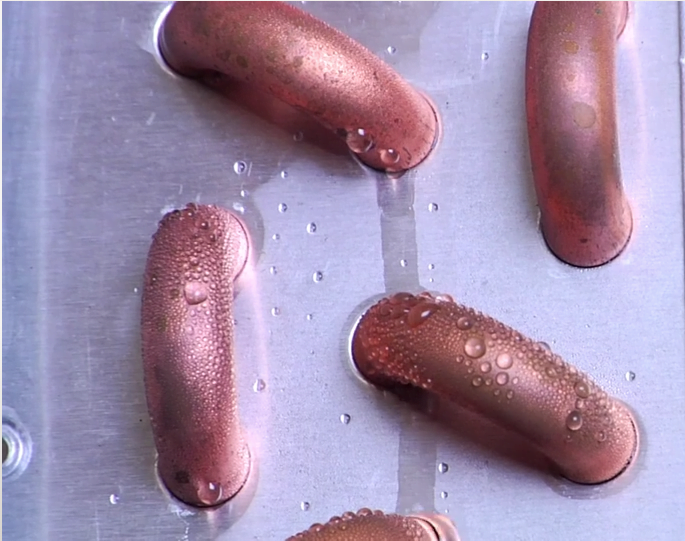What to Do if You Find Water Around Your Enclosure Air Conditioner

Discovering water accumulation in the vicinity of your enclosure air conditioner can be extremely problematic and cost-prohibitive.
Condensation Causes
Condensate is a common problem with enclosure air conditioners that lack proper condensate management systems.
Typical condensate catalysts include:
- Scheduled equipment shut-downs for line operations
- Transitions from day to night
- Seasonal weather fluctuations
- Necessary enclosure access
Ironically, some of these methods are employed to reduce energy costs and consumption, but they often stimulate long-term expenses through the condensation problems they produce.
Costly Effects
Left unchecked, condensation can engender a number of liabilities, while limiting the performance and longevity of electrical equipment.
The problems manifest when moisture accumulates on electrical component surfaces creating corrosion, rust, or work-stoppages that can damage total operational performance. Or, in some cases, excessive water can create employee occupational hazards.
Proactive Condensate Solutions
Although typically, drain lines, buckets, and separate internal heaters can offer marginal control for enclosure ACs, the inefficiencies resulting from that style of reactive management and maintenance can be costly.
Depending on your specific application, there are steps you can take to control condensation within an enclosure.
- Turn off the air conditioner during scheduled maintenance procedures: If your enclosure is situated in an area where ambient air exposure will precipitate extreme temperature fluctuations, such as in outdoor applications or within industrial facilities, turning off the AC unit during maintenance can help prevent condensation.
- Maintain a relative humidity less than 60 percent: This can be accomplished with the addition of thermoelectric dehumidifiers, equipped with applicable vent drains, which are designed to be mounted within the enclosure. However, you should check specific sizes, many enclosures cannot accommodate the space required for installation. These devices can also use significant energy.
- Install a heater, controlled by an energy efficient hygrostat (aka humidistat) or thermostat: Heaters work well for areas that are subject to low temperatures, and offer natural or forced air circulation. Hygrostats/humidistats monitor the relative humidity and turn on the heater to raise the dew point within the enclosure. An air conditioner can be ordered with a thermostat controlled built-in heater or a separate heater can be mounted in the enclosure.
- Install an enclosure air conditioner with an energy saving condensate management system: Replacing your enclosure air conditioner with one that includes an internal energy saving condensate evaporation system will eliminate the need for a water drain when the enclosure remains closed.
Choose a condensate evaporation system that acts in accordance with lean methodologies by effectively routing the water that accumulates on the evaporator coil to a drain pan fitted with copper tubing. Heated refrigerant contained in the tubing evaporates the water, and the subsequent vapor is then harmlessly discharged into the environment.
The resultant reductions in maintenance, labor costs, and energy consumption reduce total operational costs.
Moreover, most ERP or MES systems can be customized according to the manufacturer’s cleaning recommendations for the system, which typically include periodic checks for sludge, debris, or scale build up in the pan.
For more information regarding the changeover to a more cost efficient enclosure air conditioner, speak with a Thermal Edge professional. Our experts can help you identify the best solution for your needs

